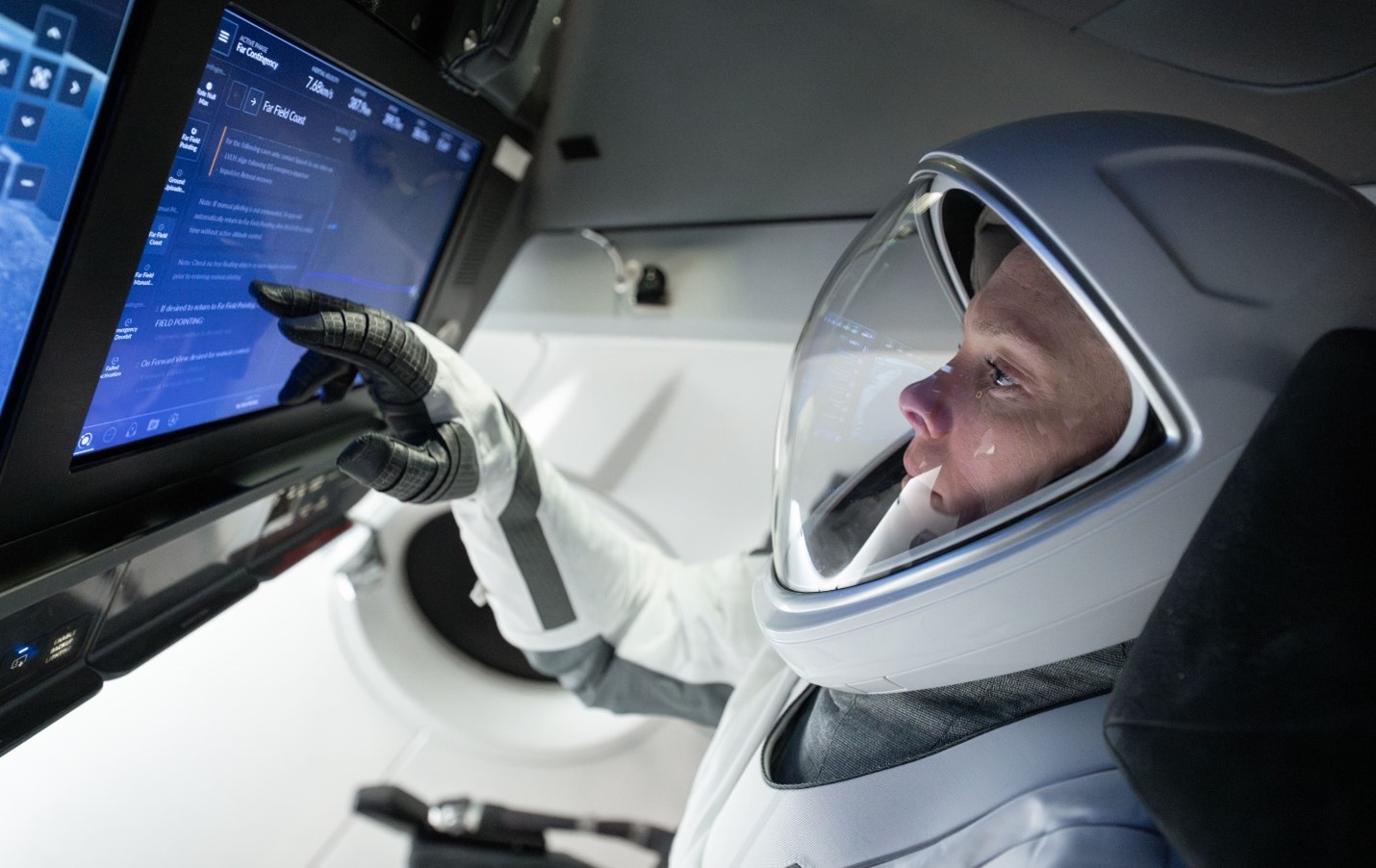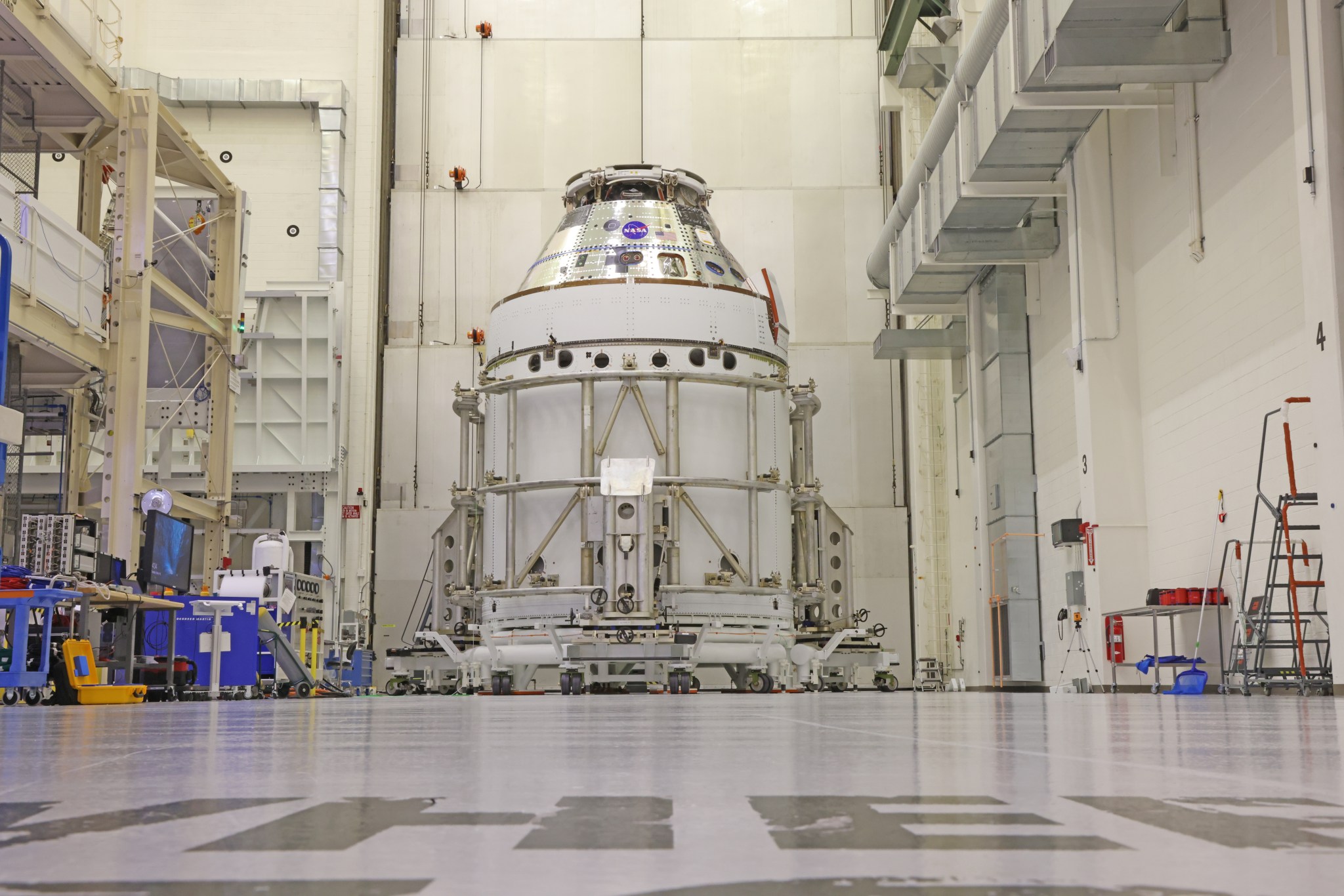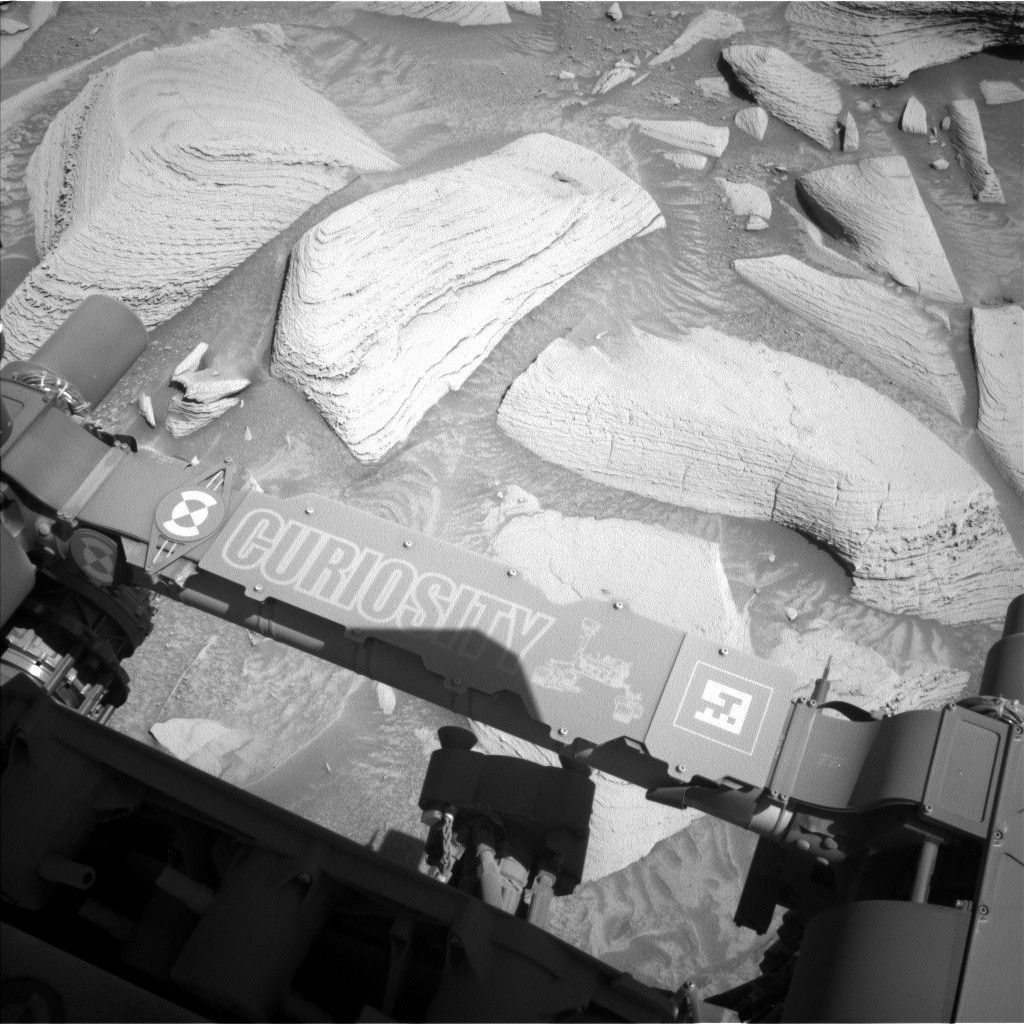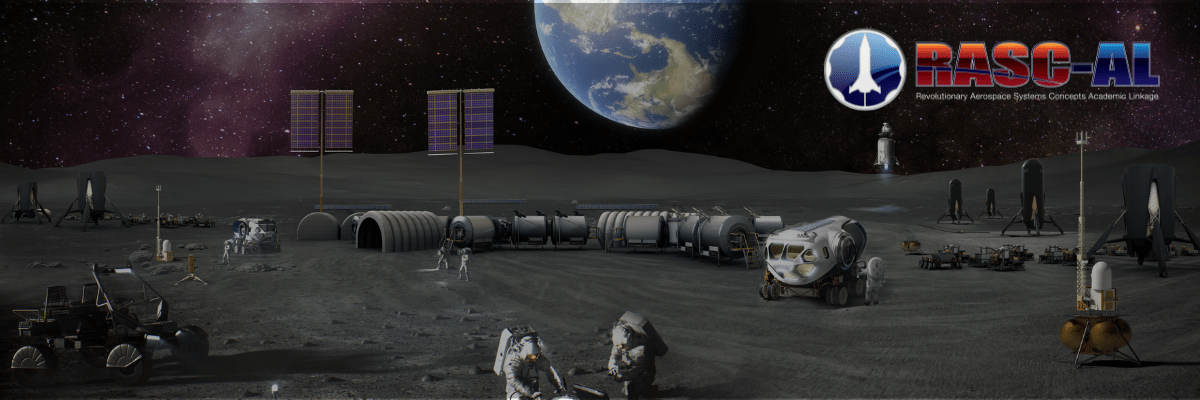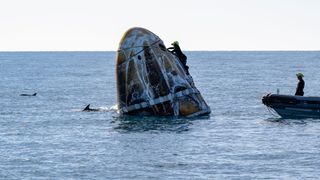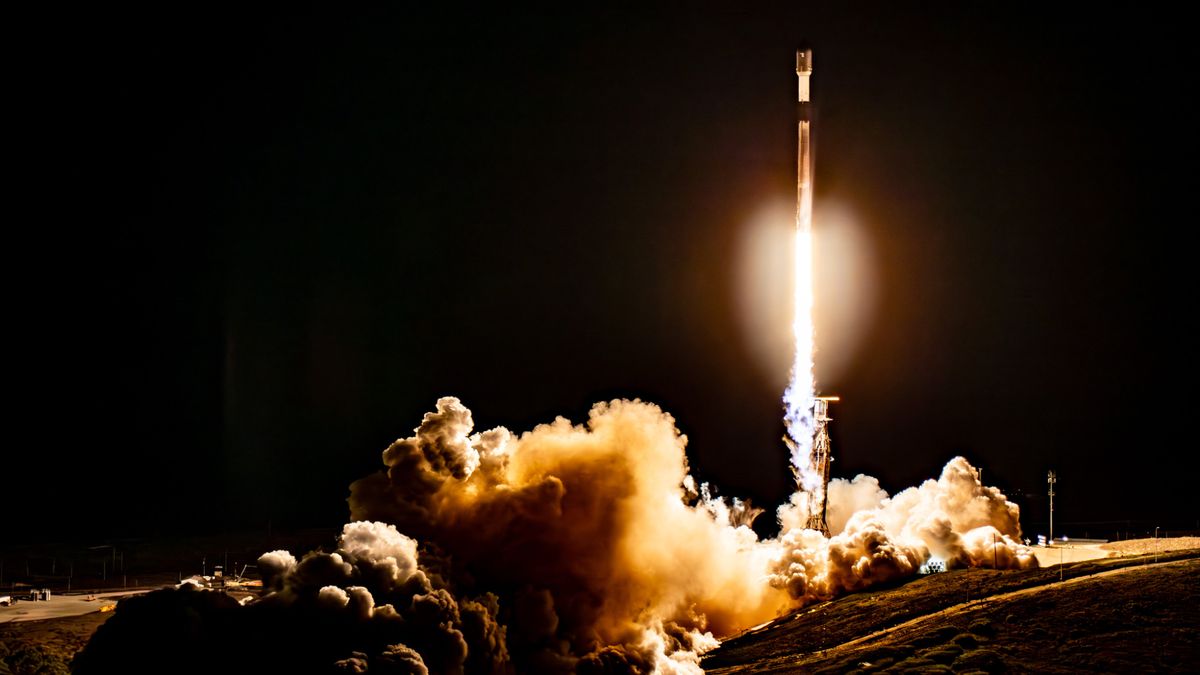NASA astronaut and Pilot for NASA’s SpaceX Crew-10 mission Nichole Ayers is pictured training inside a mockup of a Dragon cockpit at the company’s facilities in Hawthorne, California. Credit: SpaceX Students from Richmond Hill, New York,will have the chance to connect with NASA astronauts Anne McClain and Nichole Ayers as they answer prerecorded science, technology, engineering, and mathematics-related questions from aboard the International Space Station. Watch the 20-minute space-to-Earth call at 12 p.m. EDT on Wednesday, March 26, on NASA+ and learn how to watch NASA content on various platforms,…
Read MoreCategory: Nasa
Nasa
NASA’s Artemis II Orion Service Module Buttoned Up for Launch
Technicians with NASA and Lockheed Martin fitted three spacecraft adapter jettison fairing panels onto the service module of the agency’s Orion’s spacecraft. The operation completed on Wednesday, March 19, 2025, inside the Neil A. Armstrong Operations and Checkout Building at NASA’s Kennedy Space Center in Florida. The European-built service module is the powerhouse that will propel the spacecraft to the Moon. Its four solar array wings which were installed to its exterior in early March. The latest addition of fairing panels on Orion’s service module will protect the solar array…
Read MoreSols 4484-4485: Remote Sensing on a Monday
Curiosity Navigation Curiosity Home Mission Overview Where is Curiosity? Mission Updates Science Overview Instruments Highlights Exploration Goals News and Features Multimedia Curiosity Raw Images Images Videos Audio Mosaics More Resources Mars Missions Mars Sample Return Mars Perseverance Rover Mars Curiosity Rover MAVEN Mars Reconnaissance Orbiter Mars Odyssey More Mars Missions Mars Home 4 min read Sols 4484-4485: Remote Sensing on a Monday NASA’s Mars rover Curiosity acquired this image using its Left Navigation Camera on March 17, 2025 — sol 4483, or Martian day 4,483 of the Mars Science Laboratory…
Read MoreNASA Selects 14 Finalist Teams for the 2025 RASC-AL Competition
This year’s RASC-AL competition invited undergraduate and graduate students from across the nation to develop new, innovative concepts to improve our ability to operate on the Moon, Mars, and beyond.ASA NASA Fourteen university teams have been selected as finalists for NASA’s 2025 Revolutionary Aerospace Systems – Academic Linkage (RASC-AL) Competition. This year’s competition invited undergraduate and graduate students from across the nation to develop new, innovative concepts to improve our ability to operate on the Moon, Mars, and beyond. Finalists will present their proposed concepts to a panel of NASA…
Read MoreWhich is better for astrophotography? Sony, Canon or Nikon?
It can be a complex decision to choose the right camera brand for astrophotography. With new technology and an ever-increasing rate of camera development, the major photographic brands that we see regularly popping up, like Canon, Nikon, and Sony, each bring district strengths to the table. Telling these strengths apart and knowing what to pay attention to can sometimes be difficult. In astrophotography, key factors like low-light performance, high ISO capabilities, noise reduction, and any included specific astro-centric features are paramount. If you are in the market for a camera,…
Read MoreWhen space meets sea, Crew-9 Dragon meets dolphins: Space photo of the day
A pod of bottlenose dolphins circled and surfaced nearby SpaceX’s Crew Dragon Freedom after it splashed down off the coast of Tallahassee, Florida on Tuesday, March 18, 2025. (Image credit: NASA/Keegan Barber) As it turns out, more than humans were interested in the return of SpaceX’s Crew-9 astronauts after an extended mission on board the International Space Station. An unexpected welcome committee arrived soon after the Crew Dragon “Freedom” splashed down on Tuesday, March 18. What is it? SpaceX support team members work around and on SpaceX’s Crew Dragon spacecraft…
Read MoreSpaceX to set new rocket-reuse record on March 21 launch of US spy satellites
SpaceX will set a new rocket-reuse record early Friday morning (March 21), if all goes according to plan. A Falcon 9 rocket is scheduled to lift off from California’s Vandenberg Space Force Base Friday at 2:49 a.m. EDT (0649 GMT; 11:49 p.m. on March 20 local California time), on the NROL-57 mission for the U.S. National Reconnaissance Office (NRO). This rocket’s first stage also lofted the SPHEREx space telescope and PUNCH solar probes for NASA on March 11, according to a SpaceX mission description. An on-time liftoff for NROL-57 would…
Read MoreHubble Sees a Spiral and a Star
This NASA/ESA Hubble Space Telescope Picture of the Week features a sparkling spiral galaxy paired with a prominent star, both in the constellation Virgo. While the galaxy and the star appear to be close to one another, even overlapping, they’re actually a great distance apart.
Read MoreThe Earth Observer Editor’s Corner: January–March 2025
Explore This Section Earth Home Earth Observer Home Editor’s Corner Feature Articles Meeting Summaries News Science in the News Calendars In Memoriam More Archives 11 min read The Earth Observer Editor’s Corner: January–March 2025 NASA’s Earth Observing fleet continues to age gracefully. While several new missions have joined the fleet in the past year, scientists and engineers work to extend the life of existing missions and maximize their science along the way. The crowning example is the first Earth Observing System (EOS) Flagship mission, Terra, which celebrated a quarter-century in…
Read MoreAliens abduct space-crazed kid in wild new trailer for Pixar’s ‘Elio’ (video)
After making a course correction with a number of reshoots and directorial shuffling, “Elio” is poised to be Disney & Pixar’s next potential blockbuster when the kid-centric sci-fi comedy drops into our galaxy with a rescheduled release date of June 20, 2025 and we’ve got a vibrant new trailer to share. “Elio’s” family-friendly plotline orbits around its aliens-obsessed 11-year-old hero who dreams of venturing into the heavens on intergalactic adventures when he’s suddenly beamed up into the midst of the “Communiverse.” This vast interplanetary institution is a consortium of representatives…
Read More